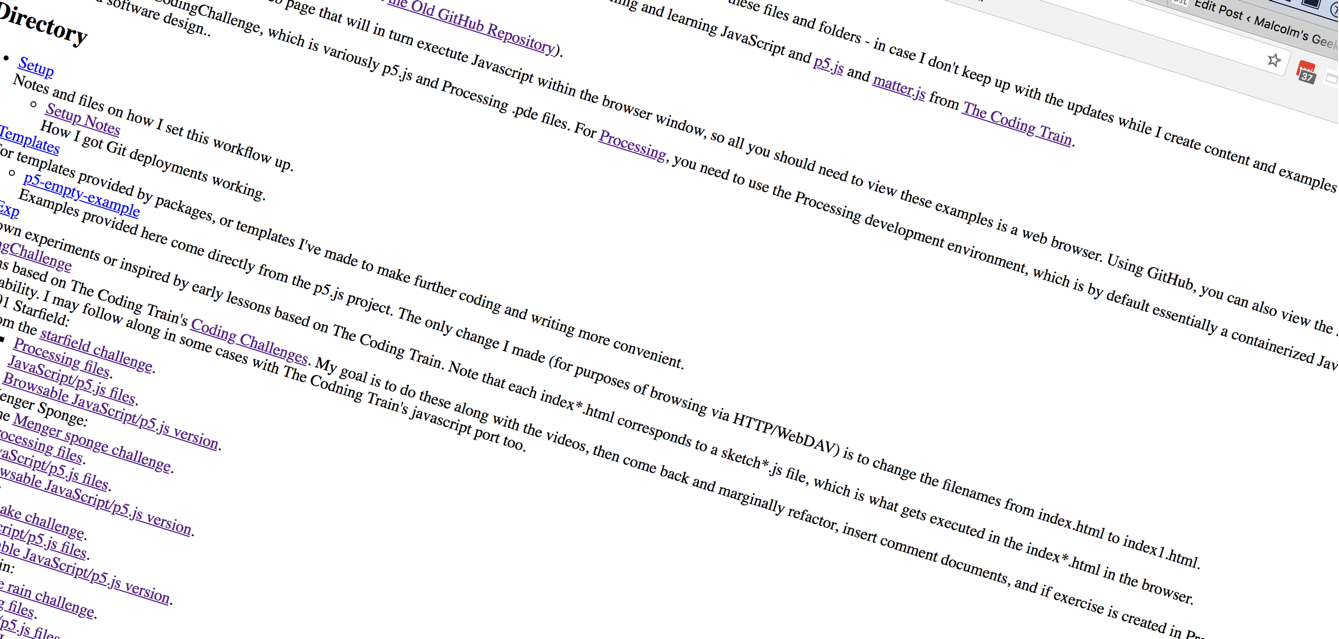Lately while alternating with looking for jobs/work, I’ve been doing programming exercises with The Coding Train, which is a good, approachable YouTube-based general tutorial/set of programming prompts, discussion, demo, and training. It’s a continuation of work I’ve been doing since late 2017.
It’s just to keep my hands in the code, stay in practice.
But along the way, I also set up git to deploy to “production” on my website, so as I maintain my local and remote repo (on Gitlab, which I chose because since their business focus is on selling continuous integration services, they allow private repositories for free – unlike GitHub, who charges for privacy). So with a git push command, not only can I update my remote repo on GitLab, but I can also publish to a web URL that I own.
I keep the directory.html, which you can refer to in order to see my work, updated, with links and commentary on what the subproject is and how to see the source or actually see the interactive product of the work. Best to find that directory.html on my website. Or you can also just poke around in the files. I’ve stayed away from using files named “index.html” so you can browse around in the files directly. (This because modern browsers usually parse these index files and mask the file listings in the directory.)
I also have a GitLab repo for my data science portfolio work. Unfortunately I’m a bit stuck in methodology for data cleaning – I got a little big for my britches, and I need to make time/spend energy on working through a somewhat difficult programming logic issue – it’s been hard to concentrate on that while bombs are going off in social and family life, but I’ll get to it. The special feature for this repo is that I have it setup to run on a Docker container, which is a way to virtualize an execution environment so you don’t have to install things you otherwise wouldn’t, it’s a way to standardize the starting points. So I created a derivative Docker image for python and Jupyter Notebooks in Data Science that also added on a Jupyter Notebooks extension for Test Driven Development. With that starting point, I integrated TDD into the Python that I wrote to clean up data from a cacao reviews set, but got stuck in a tricky geolocation data cleanup problem. But I’ll get back to the work, since I set up such a nice clean dev environment.
